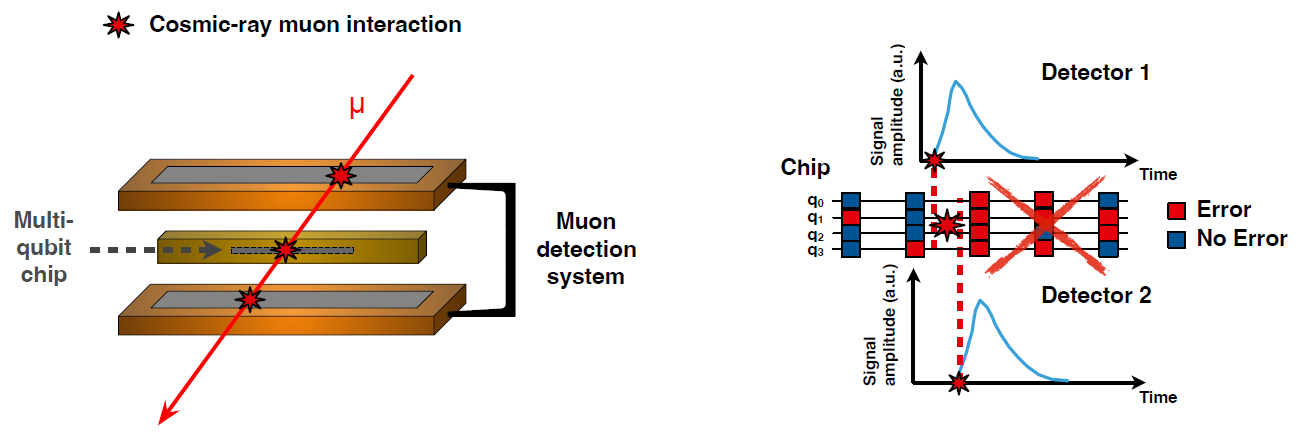Italy
Researcher (scientific/technical/engineering)
Date of the expedition
From 03/08/2024 to 02/11/2024
Selected Track
Challenges
Project title
Quantum Processing Units from Cosmic-Rays to reduce errors (SQPUCR)
Host Organization
Fermilab - SQMS Center
Media
Biography
I hold a Bachelor’s (2014) and a Master’s Degree (2017) in Physics from La Sapienza University (Rome, Italy), and a Ph.D. in Astroparticle Physics (2021) from the Gran Sasso Science Institute (L’Aquila, Italy). Currently, I am a Postdoctoral Researcher at the Istituto Nazionale di Fisica Nucleare (INFN) – Sezione di Roma and the Principal Investigator of the ACE-SuperQ project to mitigate the detrimental effect of cosmic-ray muons in superconducting qubits. My expertise lies in the characterization of superconducting devices in low-radiation environments, focusing on the development of strategies to mitigate physical processes limiting the performance of superconducting qubits.
Project Summary
Quantum systems excel at efficiently solving complex problems, and superconducting qubits are a promising technology for building fault-tolerant quantum computers. However, these quantum processing units (QPUs) are highly susceptible to noise, with cosmic-rays (CRs) being one of the contributing factors. When a cosmic ray interacts within a superconducting chip, it can cause sudden changes in the qubit’s state, leading to decoherence. In this case, the quantum information stored by the qubit is lost, resulting in computational errors. Muons, the primary CRs component reaching the Earth’s surface, are particularly problematic. Producing quite long tracks within the chip substrate, they cause correlated errors in superconducting quantum processors, limiting the effectiveness of quantum error correction and reducing the qubits coherence time (i.e., the time they can retain quantum information).
The SQPU-CR project aims to address this challenge by improving the performance of superconducting quantum devices through a novel approach. While the most effective solution currently require operating quantum chips in deep-underground facilities to reduce muon interactions, this is not feasible for large-scale quantum computing. Instead, as a part of a broader initiative, SQPU-CR proposes to equip a superconducting multi-qubit chip with a muon tagging system based on Kinetic Inductance Detectors (KIDs). This system can actively identify and tag muon interactions within the chip in real-time, allowing either the discarding of operations affected by correlated errors or the application of specifically-developed correction algorithms. SQPU-CR primarily focuses on developing the software tools necessary for data acquisition and detection of muon-induced errors, while, in parallel, will supervise the fabrication of test KIDs for the muon tagging system. By enabling the synergistic operation of the muon tagging system with the superconducting quantum device, the project aims to significantly mitigate errors caused by cosmic-ray interactions within the chip, improving coherence times and making above-ground quantum computing a viable option. Collaboration with research and industry partners will support the development and testing of this technology. If successful, this approach could greatly enhance the reliability and scalability of superconducting quantum processors.

Key Result
While the production of the hardware components of the muon detection system is started, a specialized board designed for RF (Radio Frequency) and digital applications has been successfully configured and programmed to generate and read multiple RF signals. This serves as the basis for biasing the two KIDs forming the muon tagging system and reading their responses to identify particle impacts.
The next steps involve implementing and testing the logic that will trigger the detection of muon interactions, followed by the integration of a fast qubit decay detection protocol to identify simultaneous errors in the multi-qubit chip caused by these interactions.
These initial steps are crucial, as they lay the groundwork for testing the system with real components. Once operational, this software will allow the team to measure how effectively the integrated system (KIDs plus superconducting quantum device) can improve the performance of quantum chips.
Impact of the Fellowship
The SQPU-CR project is expected to contribute to advancing innovative technologies for quantum computing. Specifically, it focuses on developing a system aimed at mitigating errors caused by cosmic-ray muons in superconducting qubits, thereby enhancing their reliability and paving the way for large-scale, above-ground quantum computation.
Key impacts include:
- Development of innovative technologies: By integrating KIDs with superconducting quantum devices, this project will enable real-time detection and mitigation of muon-induced errors, contributing to advancements in quantum error mitigation and setting the stage for more reliable and resilient quantum processors.
- Testing technologies: The project will lay the foundation for real-world testing of the integrated KID and superconducting quantum processor system. After initial lab-based validation, the next phase will involve collaborations with tech companies and research institutions to pilot the system, enabling direct testing of the technology in operational environments.
- Scientific validation: The project will provide crucial scientific validation of how ionizing radiation affects qubit performance in superconducting chips. This research will offer key insights into the interaction mechanism between ionizing radiation and quantum devices, potentially demonstrating that large-scale fault-tolerant quantum computing can be achieved in above-ground facilities, reducing the need for deep-underground setups to shield against cosmic rays.
- Advancing standards: The development and integration of KIDs for error detection in quantum processors can set new benchmarks for quantum error mitigation strategies. This project will provide insights that could contribute to advancing industry standards for reliable and scalable quantum computing, especially regarding resilience to ionizing radiation.
- Strengthening research collaboration between EU and US: The collaboration with leading research institutions in the US, particularly through the partnership with the Superconducting Quantum Materials and Systems (SQMS) Center at Fermilab, will be reinforced. This will build solid connections, enhance international cooperation, and foster an environment for collaborative innovation in quantum technologies.
- Paper submission and dissemination: The results from the system’s development and testing will be shared through conference presentations and paper submissions to academic journals, likely co-authored with collaborators from the host organization, fostering knowledge exchange across the NGI community and beyond.
- Career advancement: The fellowship is contributing to the professional growth of the project team, providing new challenges and access to cutting-edge resources and expertise. This could also open new job opportunities and career paths in the rapidly evolving field of quantum computing.
- Potential for future collaborations: The project’s success will accelerate contacts and engagements with both R&D partners and investors, opening up future collaboration opportunities. This will ensure that the developed solutions have a long-term impact on the quantum computing industry.
- Technical integration of the products: As the project progresses, the successful integration of KIDs with superconducting quantum devices will demonstrate the technical feasibility of a synergistic system for real-time error detection. This could streamline the integration of similar error mitigation tools into commercial quantum processors, setting the stage for broader applications.

